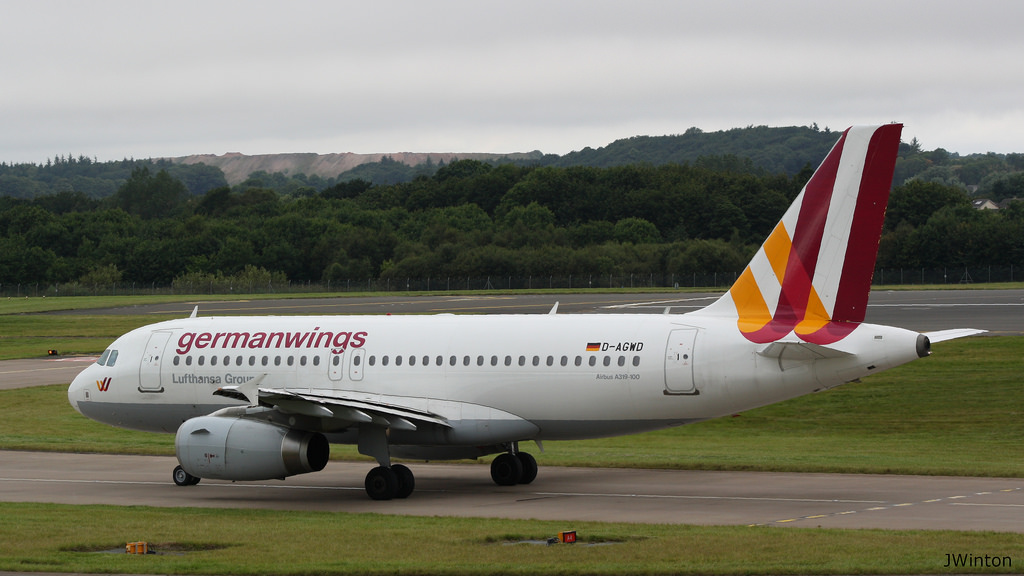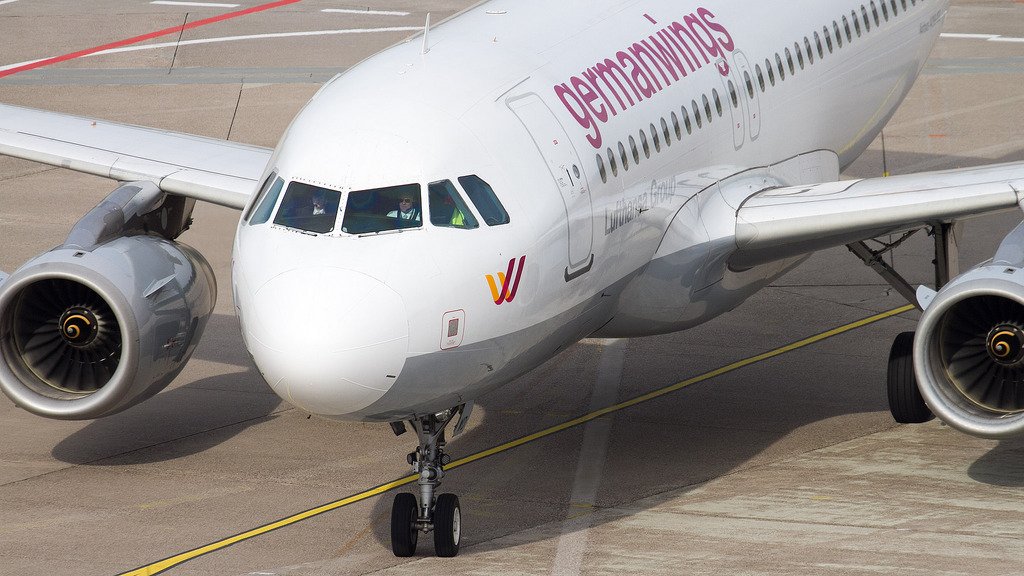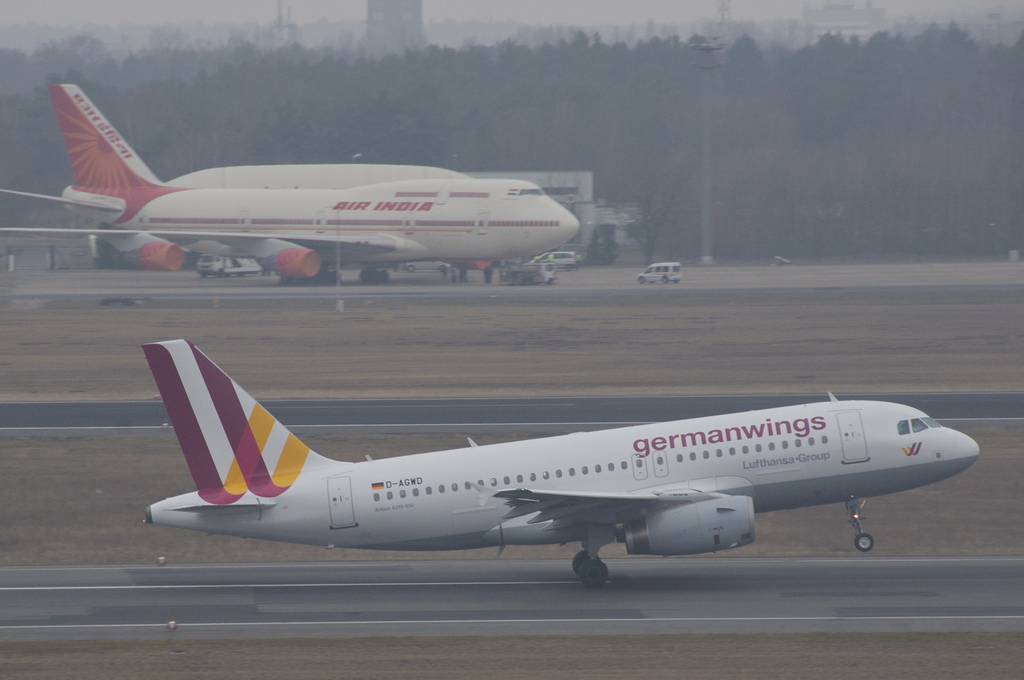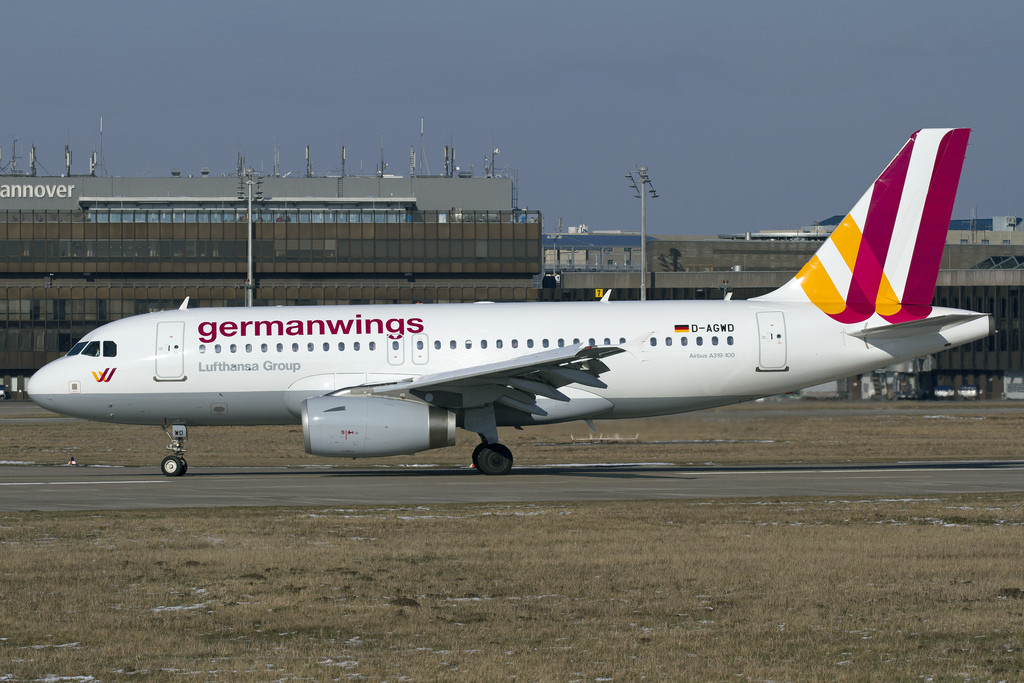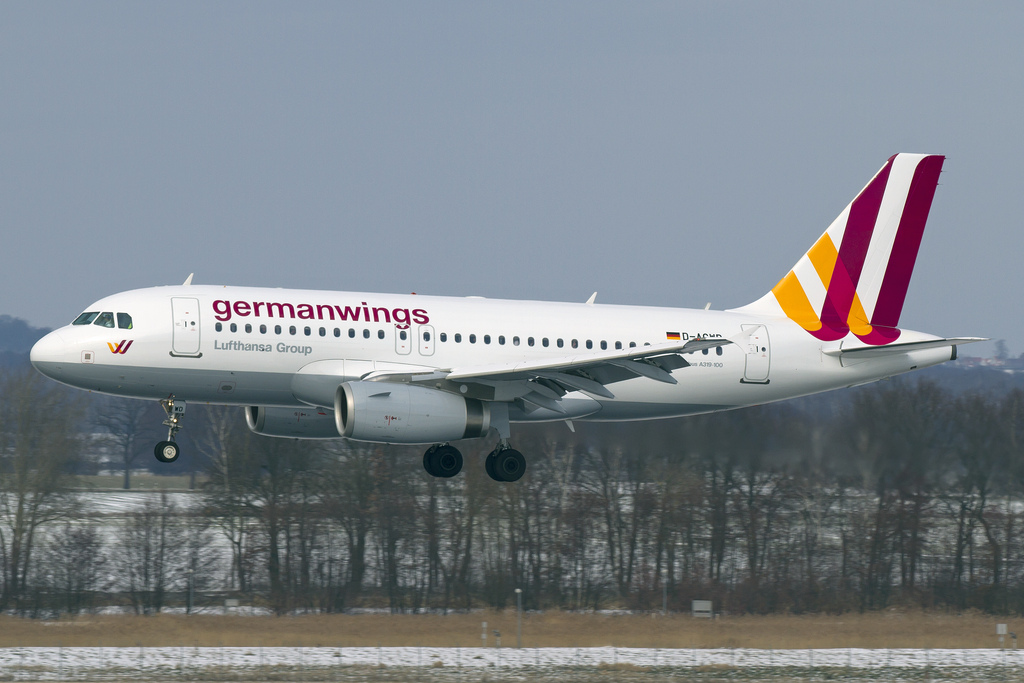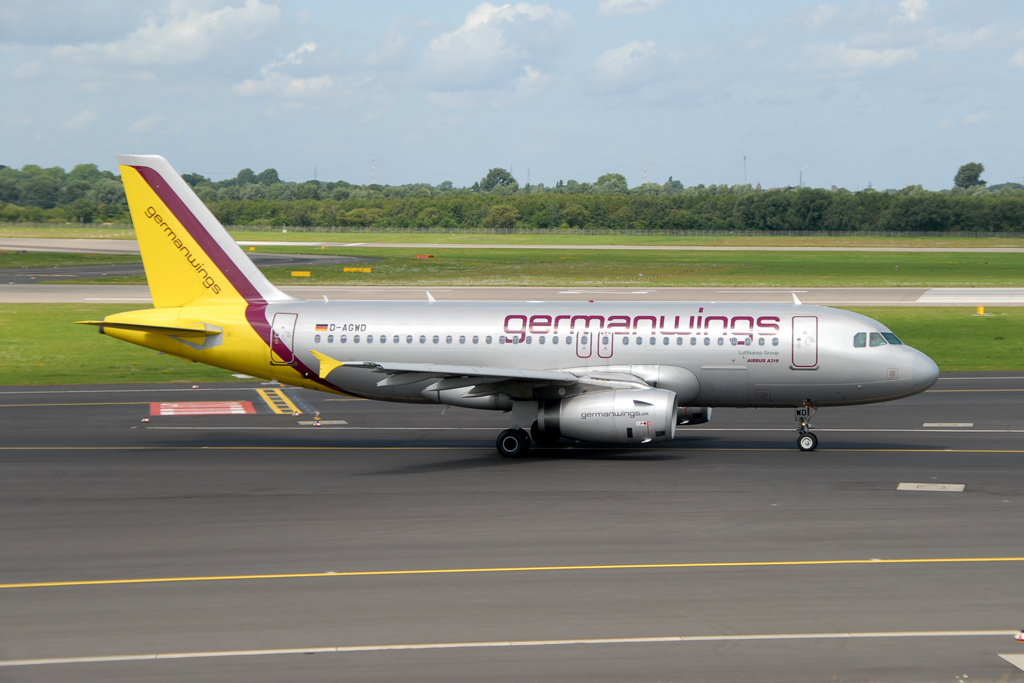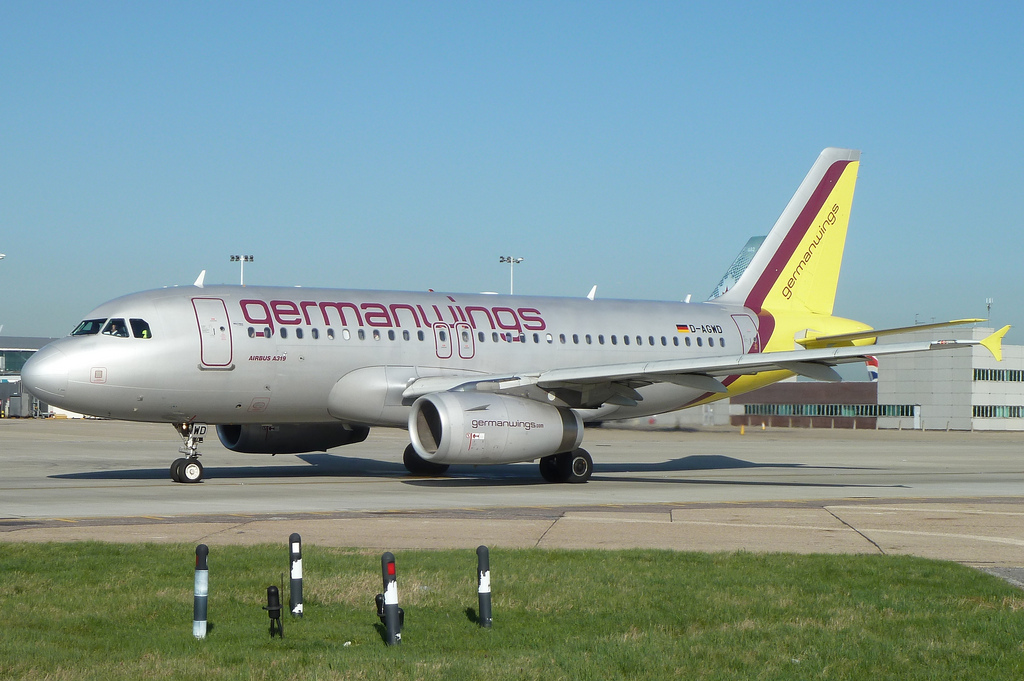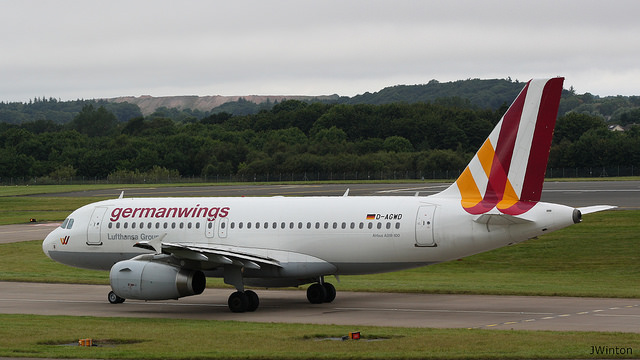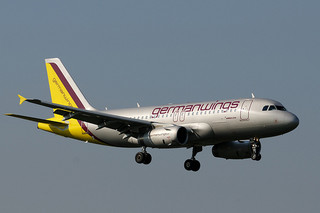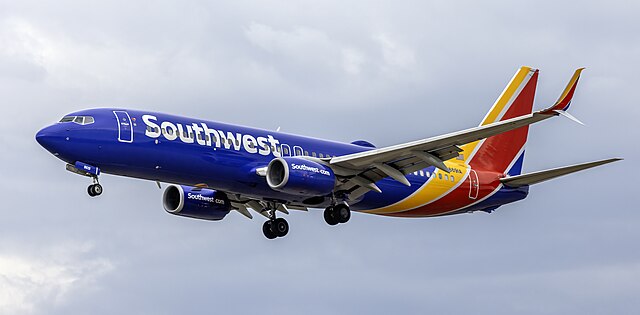Eurowings A319 and Emirates B772 at Barcelona on Jan 8th 2024, loss of separation resolved by TCAS
Last Update: March 10, 2025 / 16:41:58 GMT/Zulu time
Incident Facts
Date of incident
Jan 8, 2024
Classification
Report
Airline
Eurowings
Flight number
EW-7520
Departure
Hamburg, Germany
Destination
Barcelona, Spain
Aircraft Registration
D-AGWD
Aircraft Type
Airbus A319
ICAO Type Designator
A319
An Emirates Boeing 777-200, registration A6-EWE performing flight EK-256 from Mexico City (Mexico) to Barcelona,SP (Spain) with 219 passengers and 15 crew, was on approach to Barcelona's runway 24R in contact with control sector T4W.
The separation between the two aircraft reduced to about 200 feet vertical and 0.6nm horizontal, both crews received TCAS resolution advisories.
After resolving the conflict both aircraft landed without further incident.
Spain's CIAIAC released their final report concluding the probable causes of the incident were:
The investigation has determined that the loss of separation between aircraft UAE256 and EWG3LR was caused by incorrect planning and execution of the approach sequence on the part of the T1W sector and inadequate conflict resolution on the part of the F24W sector. The following factors are thought to have contributed to the incident:
- Inadequate coordination between sectors T1W and T4W, resulting in an unnecessary change to the approach sequence.
- T1W sector planner physically intervened in the positions of other controllers, carrying out inadequate verbal coordination.
- Inadequate management of the speeds, headings and altitudes of the traffic involved by the T1W sector.
- A lack of awareness in terms of the flight levels of the traffics involved on the part of the final sector, F24W, instructing the EWG3LR aircraft to descend to an unavailable level.
- The executive controller of the final sector was unaware of the loss of separation alerts, inadequately managed the flight parameters of the aircraft, and was unable to prevent the conflict.
The CIAIAC analysed:
When sector T14W was split, the EWG3LR aircraft was in the control area of the T1W feeder sector, and the AMAN sequence number assigned to it for approach to runway 24R was 7, its wake being classified as medium. The UAE256 aircraft was in the control area of the T4W feeder sector and had been assigned sequence number 8, its wake being classified as heavy.
On his own initiative, PC T1W coordinated with his counterpart in sector T4W, PC T4W, to propose swapping sequences 7 and 8 to move the arrival of UAE256 forward, telling him to send it directly to point BL439.
After this coordination, PC T1W changed the approach sequence of the two consecutive traffics in the AMAN tool, with the UAE256 aircraft now being number 7, and the EWG3LR aircraft being number 8. It should be noted that the feeder sectors, T1W in this case, can make changes to the sequence17 as long as the aircraft involved are consecutive and the final sector planner, in this incident PC F24W, who is also the QM, is informed. In this incident, the sequence positions being swapped were indeed consecutive, but the QM was not informed, and therefore, the potential for the final sector to anticipate the positions of the aircraft when they were transferred was limited.
According to the interviews conducted with the controllers of sector T1W, the reason for the proposed change in the approach sequence made by PC T1W was to provide a more orderly and safe handover of the traffic to final. According to their statements, they assessed the distance of both aircraft to the TEBLA fix (IF) on the approach to runway 24R, as well as their speeds (GS), flight levels and wakes.
The UAE256 aircraft was further away and at a higher altitude than the EWG3LR, and it was also classified as a heavy wake traffic, which means that, based on these parameters, the sequence validated by the QM on entry to the TMA was appropriate. The workload at the time was very low, with just 3 traffics to be managed simultaneously in the area. The only aircraft in the T1W sector was the EWG3LR. The UAE256 was in the T4W sector, as was a third aircraft, the TAP1032, which was behind these first two.
The judgement made by the PC T1W was incorrect as the change placed the “heavy” aircraft ahead of the “medium” aircraft and, therefore, required more distance between them than it left. Moreover, the EWG3LR aircraft was closer to the BL443 point and still overtook the UAE256 aircraft, which was further away, because the speeds of the two aircraft were not adequately managed.
Based on the parameters recorded in the SACTA system, the change of sequence was unjustified and unnecessary. The EWG3LR aircraft in sector T1W was at FL108 and about to commence the transition and the UAE256 aircraft in sector T4W was flying on a southeasterly heading and descending through FL134.
Following the coordination with PC T1W, PC T4W accepted the proposed change, although he considered it unnecessary, according to his statement, as aircraft UAE256 was on course to the Sabadell VOR and could be instructed later to fly directly to point BL439, which is what happened, without delaying its operation.
After accepting the change, although PC T4W told PC T1W that he would instruct the UAE256 to fly directly to point BL439 so it could enter as number 7, he gave the vector guidance to that point to the TAP1032 due to a misinterpretation, presumably because he didn't really understand what PC T1W was suggesting, given that it was unnecessary.
PC T1W saw that TAP1032 was heading directly to point BL439, which was not what he had intended.
Eventually, as a consequence of the coordination between sectors T1W and T4W, aircraft UAE256 was sent directly to BL439 and sector T1W authorised aircraft EWG3LR to descend to FL90.
The coordination between sectors T1W and T4W was inadequate; the decision to change the AMAN sequence led to deficient management of the traffic involved, and as a result, the aircraft were transferred to final in a compromised scenario.
In conclusion, the planning failed to correctly evaluate the flight parameters of the aircraft whose approach sequence was to be switched and was, therefore, inadequate, resulting in an unnecessary and misinterpreted coordination.
Execution of the new plan
The planning resulting from the coordination between sectors T1W and T4W was executed when sector T4W transferred the UAE256 aircraft, which was descending through FL113, to sector T1W.
Once both the UAE256 and EWG3LR traffics were on the T1W sector frequency, the EC T1W cleared UAE256 to fly directly to BL439 while descending to 6000 ft when it was through FL103 with a speed of 330 kt (GS). The EWG3LR aircraft was descending through FL80 to the same altitude, also 6000 ft, and about to commence the transition at a speed of 270 kt (GS).
EC T1W then instructed the EWG3LR to fly directly to BL443 without making the appropriate speed adjustments. At that point, this aircraft was flying at 280 kt (GS), not appropriate, given the intention of sequencing it behind the UAE256, as had been decided.
EC T1W instructed UAE256 (at FL90) to descend to 5000 ft without adjusting speeds again and transferred it to the final sector, F24W. Less than a minute later, when EWG3LR had just passed CLE en route to BL443, instructed to maintain 6000 ft when its speed was 280 kt (GS), it was also transferred to F24W in breach of the unit's OM, which states that it should be handed over to Final when descending to 5000 ft. The result was that there was no correct adjustment of the speeds of both aircraft, nor effective coordination with sector F24W.
In addition, two oral coordinations were initiated by the T1W sector planner without using the means established for them, one with the T4W sector and the other with the F24W sector. These coordinations were inappropriate because by physically going to the positions of the other sectors, PC T1W created uncomfortable, invasive and pressurised situations for the controllers in those positions. In addition, his own executive, EC T1W, was thus unable to keep track of what the planner had coordinated and, moreover, by going to a different area of the control room, he momentarily neglected the responsibilities of his own position, and they were unable to prevent the occurrence of the incident.
When both traffics had been transferred and were under the control of sector F24W, the latter instructed UAE256 (at 5900 ft) to descend to 4000 ft and EWG3LR to descend to 5000 ft. This clearance is considered to have contributed to the triggering of the incident. Although the situation of the two traffics on transfer to F24W had been severely compromised, it was made worse when the EWG3LR aircraft was instructed to descend to an altitude that was not available, as the UAE256 was through 5900 ft descending to 4000 ft.
Given the lack of instructions from the control service and probably influenced by the ATIS information that indicated a controller was undergoing "on-the-job training", the crew of the UAE256 aircraft took the initiative to reduce its speed.
The STCA PAC function activated when the EWG3LR aircraft was perpendicular to BL443 through 5900 ft, and the UAE256 aircraft was close to BL439 through 5600 ft, at which point they were 300 ft apart vertically and 3.7 miles apart horizontally. At that moment, the EC F24W instructed the EWG3LR aircraft to reduce its speed to 220 kt and the UAE256 to descend to 3000 ft. However, these measures were ineffective as they did not prevent the STCA VAC function from being activated 21 seconds later. The distance between the two aircraft was 2.5 miles and 300 ft, the speed of the EWG3LR aircraft being higher than that published in AIP after the turn.
After the UAE256 aircraft had overflown the SLL VOR to the south, it gradually reduced its speed from 270 kt to 240 kt (GS), while the other aircraft completed the fly-by18 over the BL443 waypoint at a speed of 270 kt (GS) when the AIP indicates that the maximum speed over this point should be 220 kt (IAS).
It can be concluded that the planning and traffic management conducted by the T1W and F24W sectors was inadequate because they failed to instruct the two aircraft to make the necessary speed, altitude and heading adjustments. Furthermore, the executive controller of F24W, who, as confirmed in the interviews, was affected by fatigue due to adverse personal circumstances, was also influenced by the ill-advised and unassertive communication made by PC T1W and by the fact that the usual spurious false alerts on his screen induced him to ignore them, which contributed to the fact that he failed to adequately assess the activation of the STCA PAC alert and the circumstances that led to the activation of the STCA VAC alert 21 seconds later.
Resolution of the conflict
Following the activation of the STCA VAC alert, the EC F24W, now aware of the conflict, instructed the EWG3LR aircraft to turn to its left, heading 080º, in an attempt to minimise the loss of separation between the aircraft.
The recordings then evidence a degree of nervousness and confusion (startle effect) in the communications made to the UAE256, with the Eurowings and Emirates callsigns being mixed up, confusing the receiver. The controller instructed a non-existent callsign, EWG256, to turn to a heading of 100°. As a result, there was no readback, and immediately afterwards, the UAE256 crew asked if the other traffic in sight was descending. The executive confirmed that it was to 5000 ft and instructed them to turn right to a heading of 110°. UAE256 read back the instructions and reported a TCAS RA warning.
All the instructions issued to both aircraft to try and minimise the loss of separation were ineffective, firstly, due to not being more imperative and accompanied by the expression "IMMEDIATELY", and, secondly, due to not immediately stopping the descent of the EWG3LR aircraft and increasing the rate of descent of the UAE256 aircraft.
After the TCAS RA warning and while the crew of UAE256 was executing the conflict resolution, the controller instructed them to modify their course by turning to their right, heading 160°. This intervention by the controller was inappropriate and should not have occurred, allowing the aircraft's crew to take action without external pressure. Presumably, the pressure to perform and the self-declared personal fatigue could have led the controller, despite having a great deal of experience, to communicate inopportunely with the aircraft when he should have waited for the crew to communicate that they were clear of the conflict before doing so. This type of intervention contravenes the requirements of chapter 15.7 of Doc. 4444 (PANS ATM), which states that the controller shall not attempt to modify the aircraft flight path until the pilot reports "clear of conflict".
We believe this mandate has not been sufficiently internalised, and therefore, specific training on human responses in this type of situation is recommended. Accordingly, a safety recommendation will be issued for the development of specific training courses on human factors in cases of conflict resolution involving an imminent loss of separation, taking into account the performances and flight attitude of each of the aircraft involved.
The EWG3LR aircraft then informed ATC that it also had a TCAS RA warning and 14 seconds later reported being clear of conflict. No essential traffic information was provided by sector F24W to any of the traffics involved. The minimum separation between the two aircraft reached 0.6 NM and 200 ft.
It should be noted that about 3 minutes before the loss of separation, there were position handovers in both the T1W and F24W sectors. The workload at the time of the handover between controllers was not high, and although it is up to the individual controller to decide whether or not they are ready to receive the situation of the traffic being transferred, i.e. to determine whether they have sufficient situational awareness of the environment, traffic and other circumstances, it would be advisable not to carry out simultaneous handovers in sectors required to coordinate and transfer aircraft between them, at least not when there is a potential conflict to be resolved.
The loss of separation occurred due to the deficient performance of EC-F24W, after receiving UAE256 and EWG3LR in a compromised situation which resulted in inappropriate conflict resolution.
ENAIRE's Operating Manual for the unit contains a protocol or checklist to ensure that when handovers between controllers take place, all the necessary information is transmitted to the incoming controller, with particular emphasis on any traffic that is in or has the potential to be in a conflict, whether or not it is on frequency. In sector T1W, where there was a team of 3 controllers rotating and exchanging positions, there is no evidence that the information was actually transmitted correctly or at least effectively.
The loss of separation between the two traffics is deemed to have been caused by the incorrect planning and execution of the approach sequence on the part of sector T1, followed by the final sector's inadequate management of the situation received, which resulted in an inappropriate resolution of the conflict.
Incident Facts
Date of incident
Jan 8, 2024
Classification
Report
Airline
Eurowings
Flight number
EW-7520
Departure
Hamburg, Germany
Destination
Barcelona, Spain
Aircraft Registration
D-AGWD
Aircraft Type
Airbus A319
ICAO Type Designator
A319
This article is published under license from Avherald.com. © of text by Avherald.com.
Article source
You can read 2 more free articles without a subscription.
Subscribe now and continue reading without any limits!
Read unlimited articles and receive our daily update briefing. Gain better insights into what is happening in commercial aviation safety.
Send tip
Support AeroInside by sending a small tip amount.
Related articles
Germanwings A319 near Belgrade on Oct 8th 2016, fan failure
A Germanwings Airbus A319-100 on behalf of Eurowings, registration D-AGWD performing flight 4U-5331/EW-5331 from Rhodes (Greece) to Cologne/Bonn…
Germanwings A319 at Milan on Sep 15th 2016, electrical problems
A Germanwings Airbus A319-100, registration D-AGWD performing flight 4U-825 from Milan Malpensa (Italy) to Cologne (Germany) with 115 people on…
Smartwings B738 at Cologne and Rhodes on Jul 17th 2025, tyre damage
An Smartwings Boeing 737-800 on behalf of Eurowings, registration OK-TSU performing flight EW-658 from Cologne (Germany) to Kos (Greece), departed…
Eurowings A319 at Hamburg on Oct 8th 2025, fumes in cockpit
An Eurowings Airbus A319-100, registration D-AGWJ performing positioning flight EW-6970 from Hamburg to Dusseldorf (Germany) with 2 crew, was…
Eurowings A320 near Zagreb on Sep 15th 2025, smoke in cabin
A Eurowings Airbus A320-200, registration D-ABNL performing flight EW-2680 from Stuttgart (Germany) to Thessaloniki (Greece), was enroute at FL350…
Eurowings A320 at Nuremberg on Jun 2nd 2025, temperature indication
A Eurowings Airbus A320-200, registration 9H-EUN performing flight EW-6817 from Nuremberg (Germany) to Palma Mallorca,SP (Spain) with 178 people on…
Eurowings A321 near Lisbon on Feb 22nd 2025, smoke in cabin
An Eurowings Airbus A321-200, registration D-AIDP performing flight EW-7526 from Hamburg (Germany) to Fuerteventura,CI (Spain), was enroute at FL350…
Newest articles
Southwest B738 at Atlanta on Nov 21st 2025, cabin pressure problems
A Southwest Airlines Boeing 737-800, registration N8691A performing flight WN-171 from Atlanta,GA to Chicago Midway,IL (USA), was climbing out of…
Fly Pro B742 at N'Djamena on Nov 13th 2025, touched down short of runway
A Fly Pro Cargo Boeing 747-200 freighter, registration ER-BAR performing flight FP-8751 from Baku (Azerbaijan) to N'Djamena (Chad), landed on…
Subscribe today
Are you researching aviation incidents? Get access to AeroInside Insights, unlimited read access and receive the daily newsletter.
Pick your plan and subscribePartner

ELITE Simulation Solutions is a leading global provider of Flight Simulation Training Devices, IFR training software as well as flight controls and related services. Find out more.
SafetyScan Pro provides streamlined access to thousands of aviation accident reports. Tailored for your safety management efforts. Book your demo today
AeroInside Blog
Popular aircraft
Airbus A320Boeing 737-800
Boeing 737-800 MAX
Popular airlines
American AirlinesUnited
Delta
Air Canada
Lufthansa
British Airways
